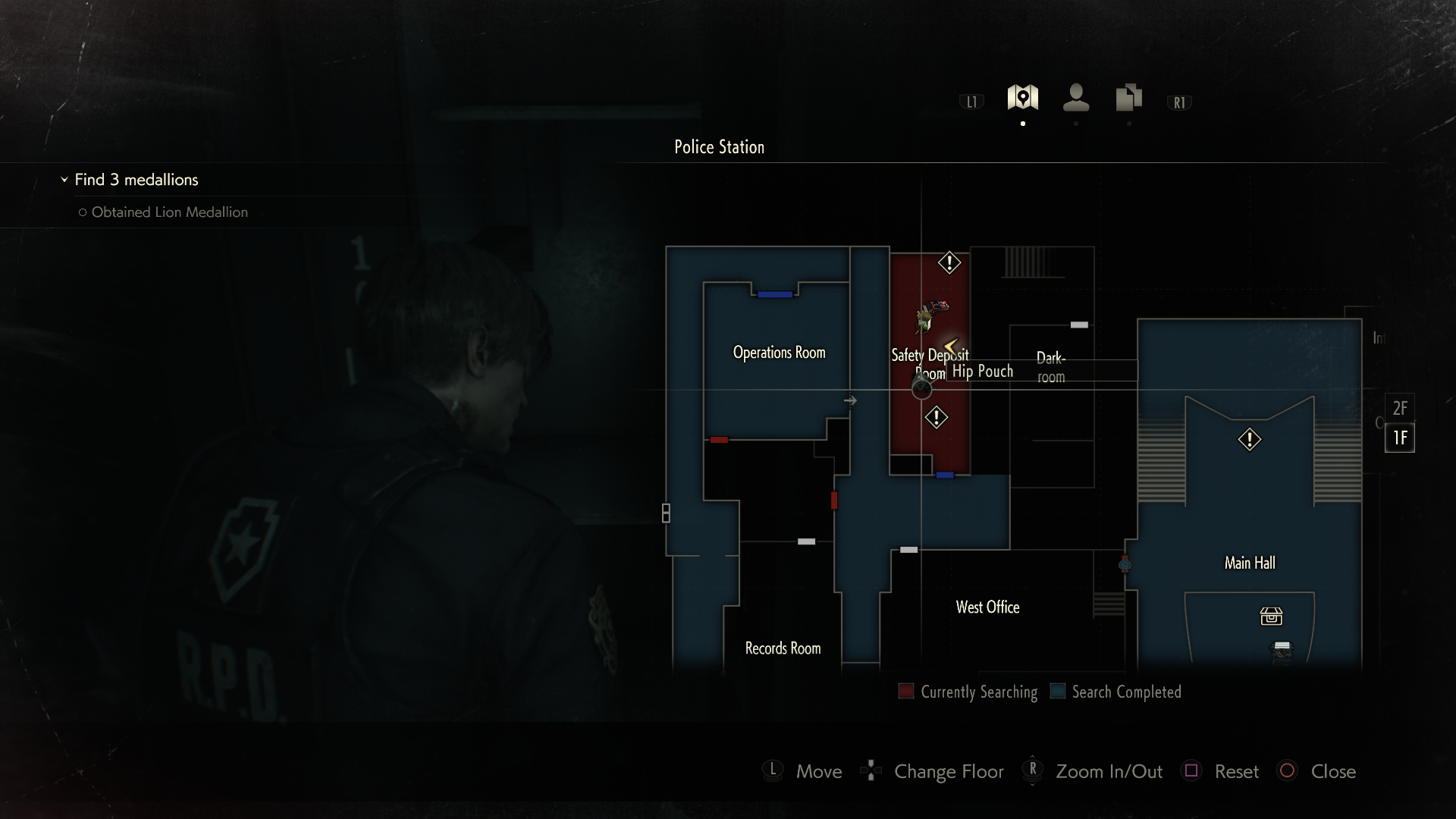
The genius part of the Resident Evil level design is that in the course of playing through the game two things happen: the player unlocks shortcuts and the player runs out of ammo. This approach has interested me for a long time. The map opens itself up like a spiral shell. Thus the player travels through the map in a very non-linear fashion, moving back and forth between rooms as items are collected and puzzles are solved, and eventually passing into areas with entirely new rooms. As the player progresses through the mansion he finds keys that unlock doors in areas he’s already visited, and must eventually return to those areas to find more keys to unlock new areas of the structure. As the game starts there are only a few rooms that are accessible–access to most of the mansion is sealed behind locked doors, secret panels, and powered-down elevators. At the beginning of the game the protagonists find themselves locked in the sinister Spencer Mansion, which is also home to lots of zombies and (as we eventually find) a large underground secret laboratory. It’s been a while since we all played Resident Evil, so let me refresh your memory. There is a wealth of interesting game design ideas in Resident Evil, and in this article I want to tackle one of them in particular: the design of the mansion map. Though it’s true that Resident Evil used Alone in the Dark as its template, I think that critics who write the game off as a copycat are not paying enough attention. Resident Evil, some will argue, might have taken the Dark formula and spruced it up for prime time, but it can hardly be credited with any great game design innovation. Critics are quick to point out that Resident Evil’s basic game system, consisting of static backgrounds, 3D characters, and character-centric pivot-and-move controls, were lifted almost entirely from Alone in the Dark.

While that particular accolade may not be entirely factual, the game is worthy of recognition for cementing horror as a viable, mass-market console genre.


Resident Evil is often credited with inventing the survival horror genre.


 0 kommentar(er)
0 kommentar(er)
